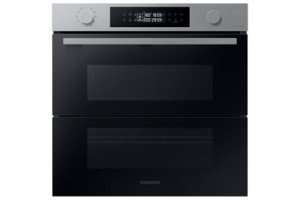5 Built In Oven Myths You Should Stay Clear Of
The Ultimate Guide to Buying a Built-In Oven
In the realm of modern cooking appliances, built-in ovens stick out for their seamless combination into kitchen cabinetry, visual appeal, and advanced cooking technologies. They supply a wide variety of functions and a structured style, dealing with both cooking lovers and everyday cooks. However, choosing the right built-in oven can be complicated given the plethora of choices available in the market. This article serves as a detailed guide, highlighting key considerations when acquiring a built-in oven, popular functions, and responses to frequently asked questions (FAQs).
Why Choose a Built-In Oven?
Built-in ovens offer various benefits, consisting of:
- Space Efficiency: They are designed to suit existing cabinets, optimizing kitchen space.
- Visual Appeal: With a range of styles and surfaces, built-in ovens enhance the total appearance of a kitchen.
- Advanced Features: Many come equipped with modern technology, making cooking easier and more precise.
- Personalization: Built-in ovens can be set up at eye level or below counter height, providing versatility based upon individual choice.
Key Considerations When Buying a Built-In Oven
Here are essential factors to think about before making a purchase:
1. Size and Dimensions
Before selecting a built-in oven, it is important to determine the offered space. Requirement built-in ovens normally fall under 2 main classifications:
Oven Size
External Dimensions
Internal Capacity
Single
24-30 inches wide
3-5 cubic feet
Double
30-36 inches large
5-10 cubic feet
Guarantee that the chosen design fits your kitchen cabinetry both in width and height.
2. Kind of Oven
Built-in ovens been available in various types, consisting of:
- Conventional Ovens: Uses heating elements above and below for standard baking and roasting.
- Convection Ovens: Employs a fan to circulate hot air, supplying even cooking.
- Wall Ovens: Installed vertically at eye level for simpler access.
- Steam Ovens: Uses steam to prepare food, preserving nutrients and moisture.
3. Fuel Type
Built-in ovens are available in different fuel types:
- Electric: Often heats up more equally, ideal for baking.
- Gas: Offers immediate temperature control, excellent for roasting and broiling.
- Double Fuel: Combines the best of both worlds with a gas cooktop and electric oven.
4. Functions and Technology
Modern built-in ovens featured a myriad of functions that improve the cooking experience:
- Smart Technology: WiFi-enabled designs enable users to control the oven remotely by means of an app.
- Self-Cleaning: Reduces the effort required to maintain a tidy oven.
- Delay Start: Lets you configure the oven to begin cooking at a predetermined time.
- Numerous Cooking Modes: Options for baking, broiling, roasting, and more.
5. Brand and Price
Choosing a trusted brand can ensure quality and dependability. Relative pricing among various brand names can aide in decision-making. Here's a short overview of popular brand names and their price varieties:
Brand
Avg. Cost Range
Notable Features
Bosch
₤ 1,000 – ₤ 3,000
Smooth style, reliable performance
Whirlpool
₤ 800 – ₤ 2,500
User-friendly controls
KitchenAid
₤ 1,200 – ₤ 3,500
Ingenious features, stylish designs
GE Appliances
₤ 900 – ₤ 2,800
Range of sizes and choices
Installation Considerations
Installation of a built-in oven is a crucial aspect that must not be ignored. It's extremely advised to work with a professional when installing a built-in oven. They can deal with electrical or gas line issues and guarantee that the oven is fitted firmly in the cabinets.
Upkeep Tips
Keeping a built-in oven is necessary to lengthen its lifespan and performance.
- Clean Regularly: Wipe down surfaces and prevent letting spills become baked-on.
- Usage Appropriate Cookware: This avoids damage to interior surfaces and boosts cooking performance.
- Inspect Seals: Inspect the door seals regularly for wear and tear to keep energy effectiveness.
FAQs About Built-In Ovens
1. How do I understand which size built-in oven to buy?
Procedure the area you have offered and compare it to the oven dimensions. Requirement sizes generally range from 24 to 30 inches for single ovens.
2. Can www.ovensandhobs.uk set up a built-in oven myself?
While it's possible to install a built-in oven without expert assistance, employing an experienced technician is recommended for security, specifically with gas or electrical connections.
3. What is the typical life-span of a built-in oven?
Generally, built-in ovens last about 10-15 years with appropriate maintenance.
4. Are built-in ovens energy effective?
Energy effectiveness varies by design. Search for energy scores or environment-friendly functions when picking an oven.
5. Do built-in ovens need unique kitchen cabinetry?
Yes, they are designed to fit particular cabinetry sizes. Guarantee the cabinets is built to accommodate the preferred oven's measurements.
A built-in oven is an outstanding financial investment that can substantially boost your cooking experience and kitchen visual. With different sizes, types, and advanced features, comprehending your requirements and preferences is vital for making the right choice. By thinking about dimensions, fuel type, and brand name credibility, you can confidently pick a built-in oven tailored to your lifestyle. Eventually, a well-chosen built-in oven will not only raise your culinary abilities but likewise serve as a spectacular focal point in your kitchen for years to come.
